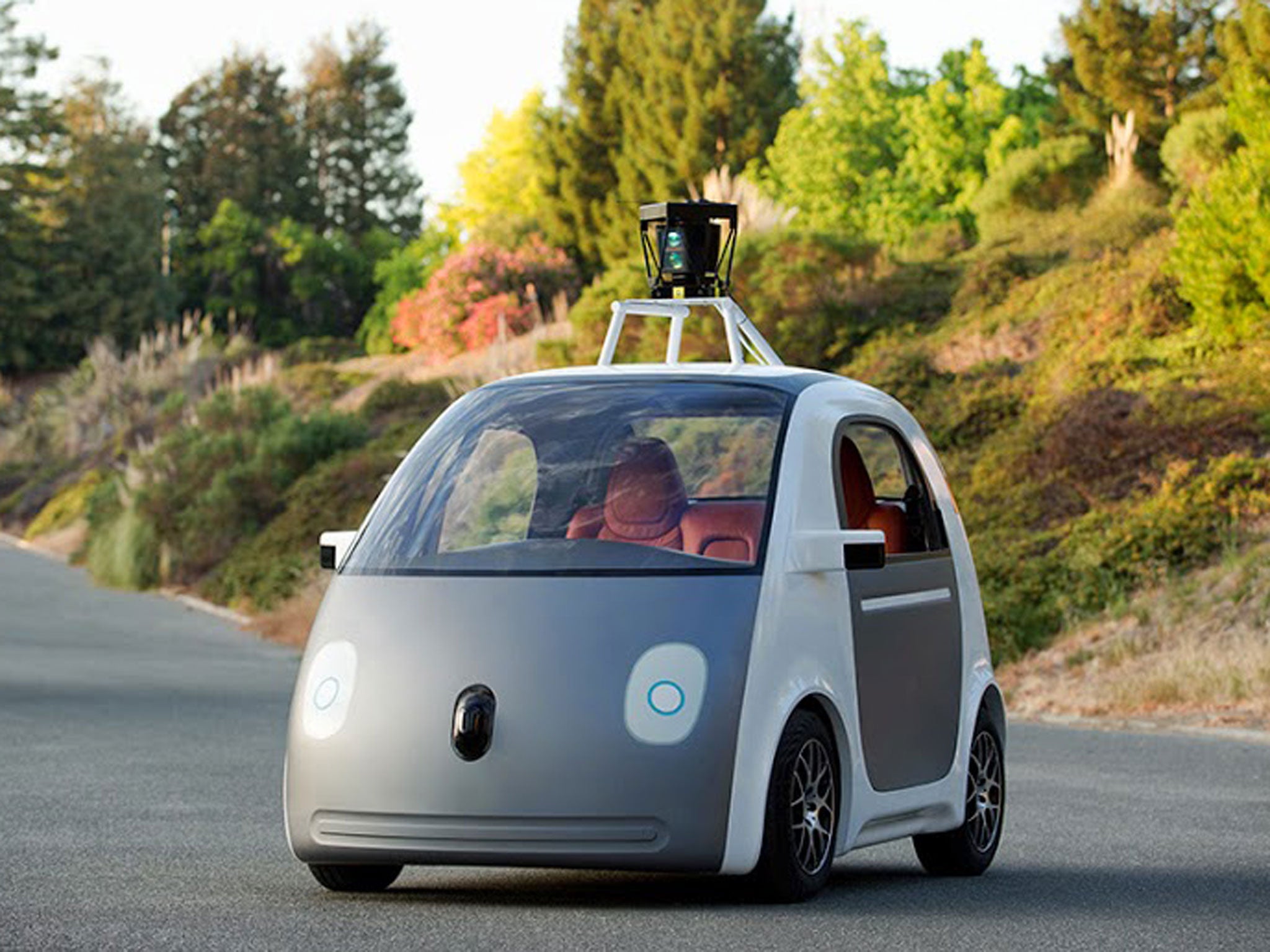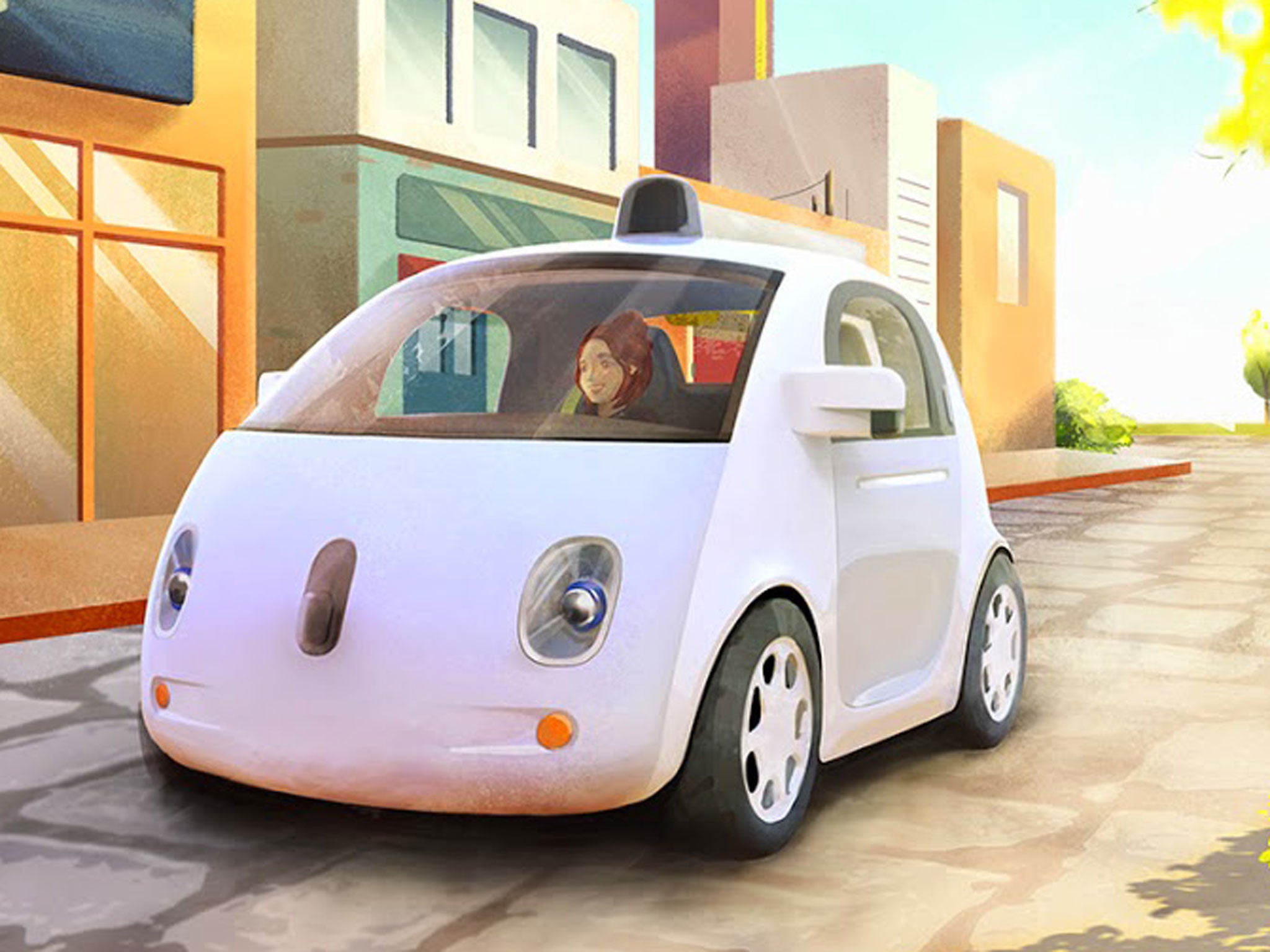7 things you didn't know about Google's self-driving car (it can't avoid squirrels for one)
We all know it's another technological marvel from Google, but what else is there to the steering-wheel-less wonder?

Your support helps us to tell the story
From reproductive rights to climate change to Big Tech, The Independent is on the ground when the story is developing. Whether it's investigating the financials of Elon Musk's pro-Trump PAC or producing our latest documentary, 'The A Word', which shines a light on the American women fighting for reproductive rights, we know how important it is to parse out the facts from the messaging.
At such a critical moment in US history, we need reporters on the ground. Your donation allows us to keep sending journalists to speak to both sides of the story.
The Independent is trusted by Americans across the entire political spectrum. And unlike many other quality news outlets, we choose not to lock Americans out of our reporting and analysis with paywalls. We believe quality journalism should be available to everyone, paid for by those who can afford it.
Your support makes all the difference.Google caused a flurry of excitement today by unveiling an all-new self-driving car that takes its array of add-on sensors and integrates them into a vehicle that looks like a cross between a Smart car and a Cozy Coupe.
Currently being tested around the company’s Californian headquarters, the prototype could offer a whole new paradigm for driving where vehicles are operated by a single push-button and function like an automatic taxi service - not autonomous cars.
There’s still a whole load of questions (both legislative and technological) that need to be answered before these sorts of vehicles become anywhere near the norm, but announcements like this mean we’re learning more about what a self-driving car might mean. Here’s the favourite things we’ve learned today:
1. It can’t avoid killing small animals
The sensors that allow the car to avoid pedestrians and cyclist aren’t sensitive enough to avoid smaller beasties. It’s unclear exactly what the size threshold is (will a small dog be seen? A badger?) but Wired reports that squirrels are definitely “too small” and could get "creamed". There have been no accidents to date though - and Google and working on making the sensors more accurate.

2. It’s got a face for a reason
Google says they’re trying to make the car look as friendly as possible and to that end built a ‘face’ into the front of the car. Humans seeing faces in random objects is well-documented (it’s often referred to as facial pareidolia and is all thanks to evolution) but the choice underscores the fact that Google faces a struggle against those who are inherently hostile to technology. The promo video for the car underscores exactly the same message: everyone's happy, everyone's safe (except the squirrels).
3. No signal on your mobile? No Google-car for you
Of course the problem with connected cars is less-than-connected roads. Ever got spotty signal on your phone on the motorway? Then that's where your self-driving car might lose access to the detailed maps (created in advance the old fashioned way by Google's hand-driven cars) that it uses for guidance. There's no reason information like this can't come preloaded into self-driving cars, but it would give new meaning to the phrase 'going off the edge of the map'.
4. It feels ‘like a theme park ride’
Although Google has released a video showing ‘normal folks’ having a go in the car (above) not many journalists have been given the same opportunity. Kara Swisher and Liz Gannes of tech site Recode were two of the lucky few and they described the car as “a gondola with wheels”, noting that the combination of button-operated controls and a little departure message telling them to pick-up their baggage when they left made it feel “a lot like a theme park ride.”
5. We’re getting them in Milton Keynes
See that below? No, it’s not a rival prototype from Microsoft but actually one of 20 pods that will be introduced to Milton Keynes in 2015 as part of their trial for a ‘driverless public transport system’. Like Google’s vehicles they’ll eventually have no steering wheel and be operating at the touch of a button, using a combination of GPS, sensors and cameras to navigate and avoid pedestrians. Poor Milton Keynes – forefront of the self-driving revolution and nobody knows.
6. Google’s cars will still need a steering wheel – for legal reasons
Despite the fact that the car is being advertised as having no controls, Google will have to include both pedals and a wheel when they test the vehicles on California’s streets thanks to the state’s laws. This tension between what a car is and what it isn’t (see above - do you need a steering wheel? Do you need wheels?) is sure to continue to plague Google .
7. Google will pay the parking tickets
So far Google’s self-driving cars have never gotten a parking ticket (and they’ve only been in two accidents – both when humans had taken control) but if they do, it’s apparently Google that will pay up. A safety director for the company told The Atlantic that because “the decisions are not being made by the individual” they think that “the ticket should go to the company”. It’s a generous answer, but one that raise more serious questions about responsibility and the law: what happens if someone does get hurt by a Google car, who's responsible then
Join our commenting forum
Join thought-provoking conversations, follow other Independent readers and see their replies
Comments